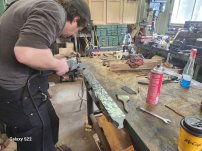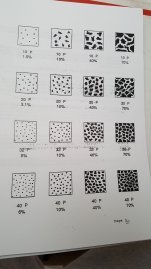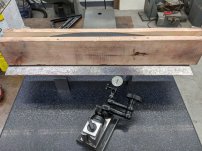Hi.
Your scraping looks good. My journey was similar to yours. Lots of overthinking and googling lol.
I would suggest going to one of Richard's classes for your own peace of mind. I spent a long time trying to figure it out on my own and pretty much had it, but the small details I didn't get prevented me from being able to consistently and efficiently scrape a fine finish, leading to a lot of time wasting trying to come up with solutions to simple issues with technique.
Some of the big things for me were the following;
I was using a cast iron lap with diamond lapping compound. Regardless of what grade lapping compound i used or what angle i used (-5* to -15*) I would get chatter. Even with a super fine polished cutting edge that felt and looked sharp.
Eventually I figured out that I had too much compound on the lap, which let the compound build up on the cutting edge, rounding it off slightly. After wiping the lap off till it was almost clean I was able to get a keen edge and no chatter.
Not scraping deep enough when finish scraping. This made it really difficult to improve PPI. Richard says same blade pressure (8lb) roughing and finish scraping. This is particularly important with the power scraper, as it's a lot easier to take tiny cuts which do nothing to help you if you're at 10-20 ppi.
Not using a flat stone ~ none of them are flat they are high in the middle and will mess up your bearing if you're not attentive.
Also I was using a fine grit Norton slips, which I found too fine; they polished the high spots, making them difficult to distinguish from the true high spots polished from spotting cycles. The lack of cutting and uneven cutting surface made it difficult to improve bearing quality.
Holding on to what I was scraping with bare hands. Even just for short periods of contact; rubbing/transferring item to plate this caused me a few issues, so I just use a rag to hold item if it's a straight edge etc.
Will.








